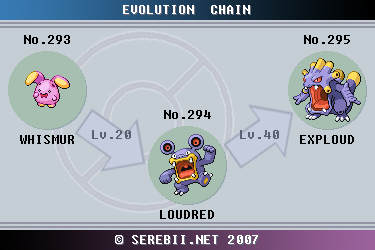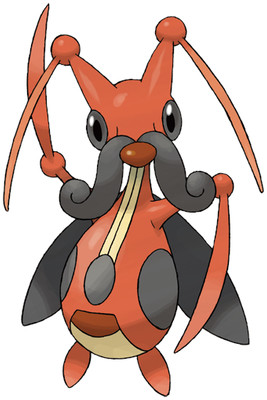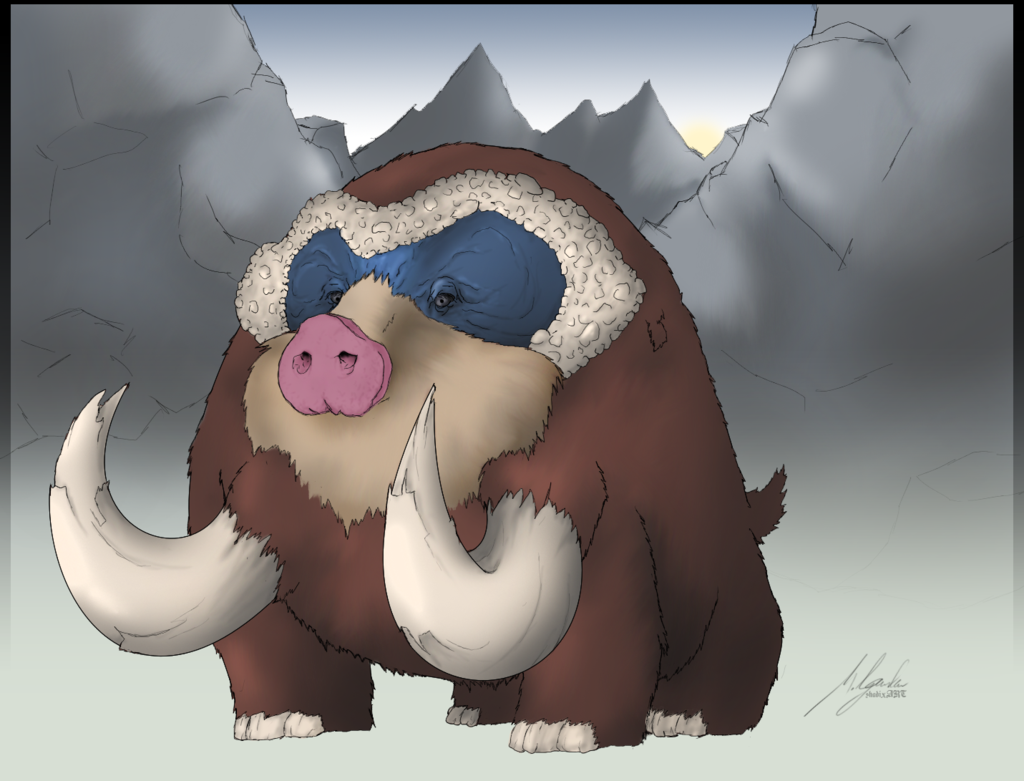Note: While there are probably more Pokémon that can be associated with sound, I have chosen the following as my personal list. This is to help be slightly more efficient when creating this post. Please, feel free to list off any Pokémon you think should also make this list!
First and foremost, I'll be talking about a line of Pokémon: Whismur, Loudred, and Exploud. These Normal-types all can possess the Ability Soundproof, and while they aren't particularly powerful stats-wise, they're certainly interesting visually, and ridiculously noisy. According to the Pokédex, Whismur can shriek as loudly as a jet plane if frightened, Loudred's shouting can tip trucks onto their sides, and Exploud's cries can be heard from more than six miles away...that's explosively loud!
 |
| (Via Serebii.net.) |
The next Pokémon I'll be talking about is Chatot. It should be fairly obvious just by looking at a Chatot that it is affiliated with sound in some way...its head looks like an eighth note!
 |
| (Chatot as it appears in Gen 6; via Serebii.net.) |
Up next is a rather famous song Pokémon...the pink fluff-ball him/herself...
 |
| (Via Bulbapedia.net.) |
Aww, Jigglypuff, you were supposed to come on after I announced you! Anyway, Jigglypuff is rather famous for its songs, which lull people into sleep. In the anime, it would lull people to sleep in order to prank them. With the introduction of the Fairy type, Jigglypuff is beginning to see some competitive use, though it's not as common as some other Fairies out there. Jigglypuff's Pokédex entries are relatively consistent in describing how it makes people fall asleep, between its lullabies and overall cuteness, with those big, round eyes...*yawn*...huh? Oh, no, it's just the infection that's making me tired, I promise.
You might not initially think of this Pokémon as being affiliated with sound, but that's probably just because you forgot about his existence. So, let's welcome the mustachioed cricket him/herself, Kricketune.
 |
| (Via pokemondb.net.) |
While it's true that Kricketune is generally weak and sleeps into obscurity in most people's minds, it's a very musical Pokémon (and I've always loved its cry). Did you know that Kricketune expresses its emotions through its melodies? According to its entry in Y, scientists are interested in Kricketune's melodic emotional expression enough to do serious research on it! Additionally, the Pokédex seems adamant on reiterating that there is an undisclosed village, somewhere in the Pokémon world, that hosts a contest to compare the varied cries of Kricketune. Pretty neat, huh?
The final Pokémon in this post is the only legendary I'm including here; though I'd think it ridiculous for me to not include them/her! (I will refer to the aforementioned legendary as "her" for all intensive purposes here, though I'm not discrediting the fact that there could be male/more masculine members of the species out there.) Yes, I'm talking about Meloetta!
 |
| (Meloetta in Aria Forme; ia Bulbapedia.net.) |
Meloetta is very musical already; she is biologically equipped with what appears to be modified sheet music for hair (though it isn't technically accurate), a microphone, and a special song (the move Relic Song) she can use to change Forme. Meloetta is said to have inspired many songs throughout history, and that her melodies can sway the emotions of Pokémon around her. I can't think of a better note to end on than Meloetta (yes, the pun is very much intended), whose entire existence seems rather centered around music and song.










